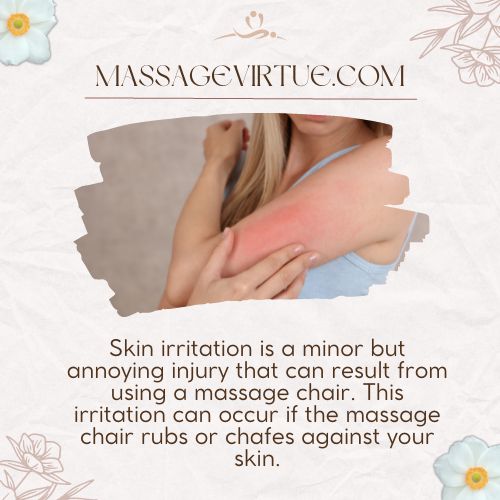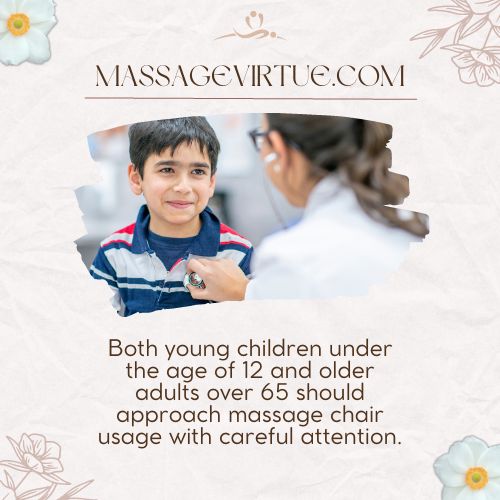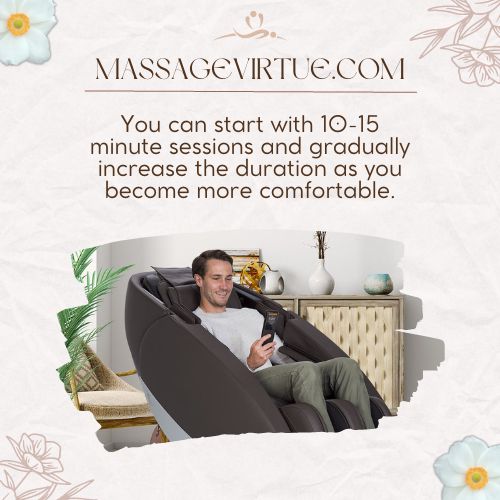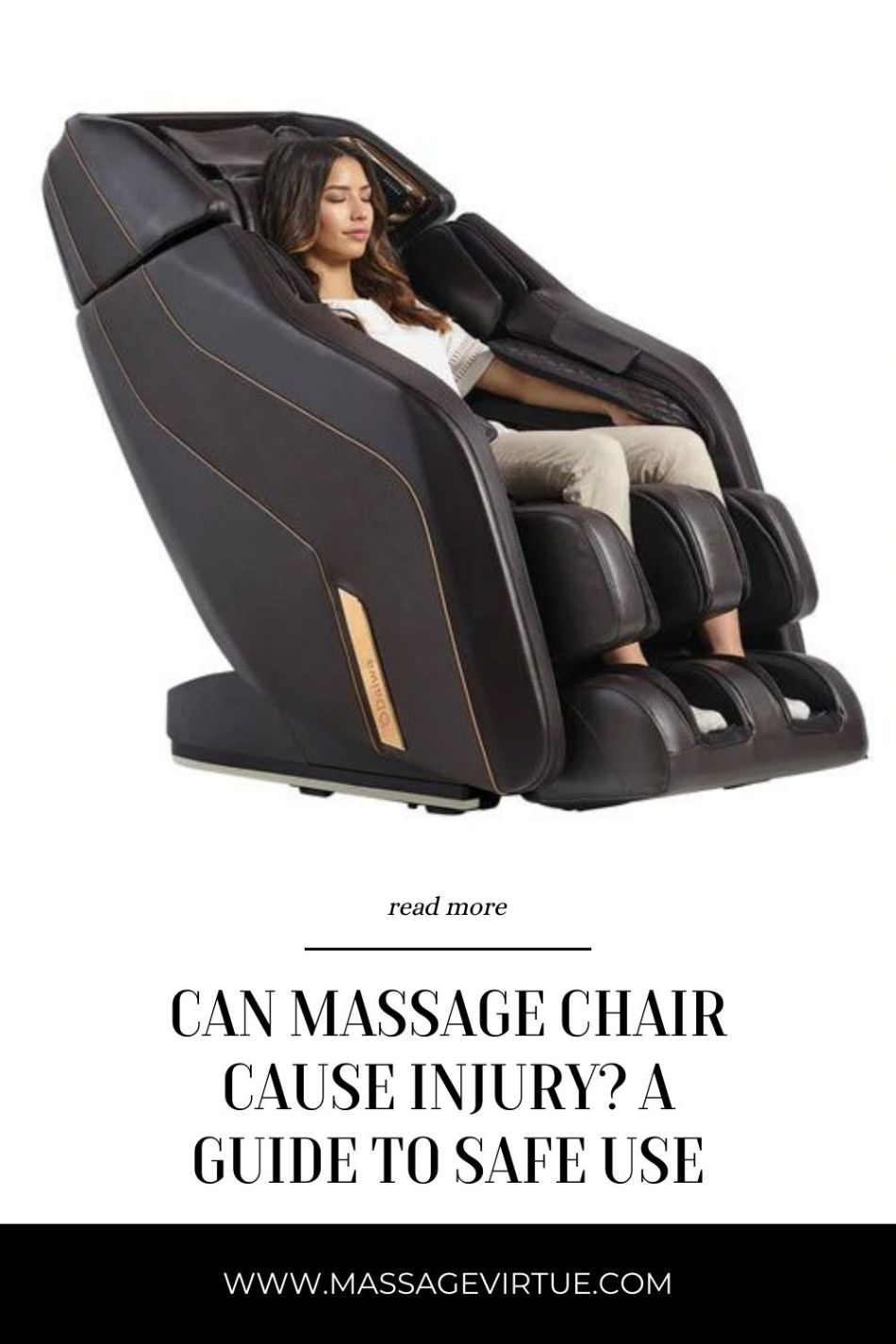Many people use massage chairs to relieve stress, tension, pain, and fatigue, as well as to improve blood circulation, muscle flexibility, and overall well-being.
However, like any other device, massage chairs also come with some potential risks and drawbacks that you should be aware of before using them.
In this article, we will discuss whether massage chairs can cause injury, what are the contraindications and precautions for using a massage chair, and how to use a massage chair safely.
Can Massage Chair Cause Injury?
The short answer is yes, massage chairs can cause injury if used improperly or excessively.
However, the risk of injury is generally low and can be reduced by following guidelines and tips.
These chairs employ techniques that vary pressure and intensity across your body – from neck and back to shoulders, arms, legs, and feet.
While these techniques offer health benefits, excessive strength or frequency can lead to adverse effects.
Types of Injuries Caused by Using Massage Chairs
Some of the common types of injuries that can occur from using a massage chair are:
1. Fractures
Fractures are rare but possible injuries can result from using a massage chair.

Fractures can occur if the massage chair applies too much force or pressure on a weak bone, such as in people with osteoporosis or other bone diseases.
Fractures can also occur if the massage chair malfunctions or breaks down during use.
2. Bruises
Bruises are more common but less serious injuries that can result from using a massage chair.
These injuries can occur if the massage chair applies too much pressure or intensity on a sensitive or delicate area of your body, such as your neck, spine, ribs, or joints.
Bruises can also occur if you have thin or sensitive skin, or if you have any existing wounds or cuts on your body.
3. Muscle Soreness
Muscle soreness is another common but mild injury that can result from using a massage chair.
Muscle soreness can occur if the massage chair applies too much pressure or intensity on a tight or tense muscle.
This causes it to stretch or contract beyond its normal range.
Muscle soreness can also occur if you use a massage chair for too long or too often without giving your muscles enough time to recover and relax.
4. Skin Irritation
Skin irritation is a minor but annoying injury that can result from using a massage chair. This irritation can occur if the massage chair rubs or chafes against your skin.

This causes it to become red, inflamed, or itchy.
Skin irritation can also occur if you have any allergies or sensitivities to the materials or fabrics used in the massage chair.
Contraindications and Precautions for Using a Massage Chair
Contraindications are conditions or situations that make it unsafe or unwise to use a massage chair. Precautions are conditions or situations that require extra care or caution when using a massage chair.
Some of the contraindications and precautions for using a massage chair are:
1. Pregnancy
Pregnant women should avoid using a massage chair because it can cause complications.
These complications include premature labor, miscarriage, placental abruption, or fetal distress.

Massage chairs can also affect the hormonal balance and blood pressure of pregnant women, which can pose risks for both the mother and the baby.
2. Recent Surgery
Using a massage chair after recent surgery isn’t recommended. It might hamper the healing process, leading to issues like infections, bleeding, inflammation, or scarring.
Moreover, these chairs can also impact blood circulation and clotting, adding potential risks to your recovery journey.
3. Medical Implants
If you have medical implants like pacemakers, defibrillators, stents, pins, screws, plates, or artificial joints, it’s important to steer clear of massage chairs.
These devices have the potential to harm or dislodge your implants and even interfere with their electrical signals.
This interference could introduce health risks that you’ll want to avoid.
4. Underlying Health Conditions
If you have existing health issues like high blood pressure, heart disease, diabetes, epilepsy, cancer, blood disorders, or infections, it’s important to consult your doctor before using a massage chair.
This precaution is crucial as a massage chair has the potential to impact your condition and how your medications work.
5. Age
Both young children under the age of 12 and adults over 65 should approach massage chair usage with careful attention.

Due to their more delicate and sensitive bodies, extra caution is advised.
For the safety and well-being of these age groups, it’s recommended to operate the massage chair under supervision.
How to Use a Massage Chair Safely and Effectively?
To use a massage chair safely and effectively, you should follow some simple guidelines and tips, such as:
1. Read the User Manual
Before using a massage chair, you should read the user manual provided by the manufacturer.
The user manual will give you important information about the features, functions, and safety guidelines of the massage chair.
You should also familiarize yourself with the controls and settings of the massage chair.
2. Adjust the Chair to Your Comfort Level
Before starting a massage session, you should adjust the chair to your preferred position and comfort level.
Ensure that the chair is stable and securely positioned on a flat surface.
You should also make sure that the rollers and airbags are aligned with your body parts, such as your neck, back, shoulders, arms, legs, and feet.
3. Start With Short Sessions
If you are new to using a massage chair, you should start with shorter sessions to allow your body to adjust to the massage experience.

You can start with 10-15 minute sessions and gradually increase the duration as you become more comfortable.
You should also avoid using a massage chair for more than 30 minutes at a time, or more than once or twice a day, to avoid overusing or straining your muscles.
4. Pay Attention to Sensations and Pain
Listen to your body while using a massage chair.
If you feel pain, discomfort, or anything unusual, stop using the chair right away. Adjust settings or intensity, and if the issue continues, consult a healthcare professional.
Avoid the chair on injured or inflamed areas, and heed contraindications or precautions.
5. Keep Children and Pets Away
For safety reasons, you should keep children and pets away from the massage chair while it is in use.
Children and pets can accidentally activate or damage the massage chair, or get injured by the moving parts of the massage chair.
Benefits and Side Effects of Using a Massage Chair
| Benefits | Side Effects |
| Reduces stress, tension, and anxiety. | This may lead to tiredness or sleepiness, especially with prolonged usage. |
| Improves blood circulation, and reduces inflammation, and discomfort in muscles, joints, and nerves. | Can lead to water and electrolyte loss, potentially causing dehydration, headaches, or dizziness. |
| Enhances mood, immune system, sleep quality, and digestion. | May cause skin, muscle, or nerve irritation, resulting in redness, itching, or soreness. |
| Increases mobility by stretching muscles, tendons, and ligaments, preventing stiffness and injuries. | Incorrect or excessive use can lead to body damage (like fractures, and bruises) or chair damage (electrical shock, mechanical failure). |
Conclusion
Massage chairs are great devices that can provide a relaxing and therapeutic massage experience in the comfort of your own home.
However, they also come with some potential risks and drawbacks that you should be aware of before using them.
Massage chairs can cause injury if used improperly or excessively.
By following the above guidelines and tips, you can enjoy the benefits of a massage chair without risking your health or safety.


